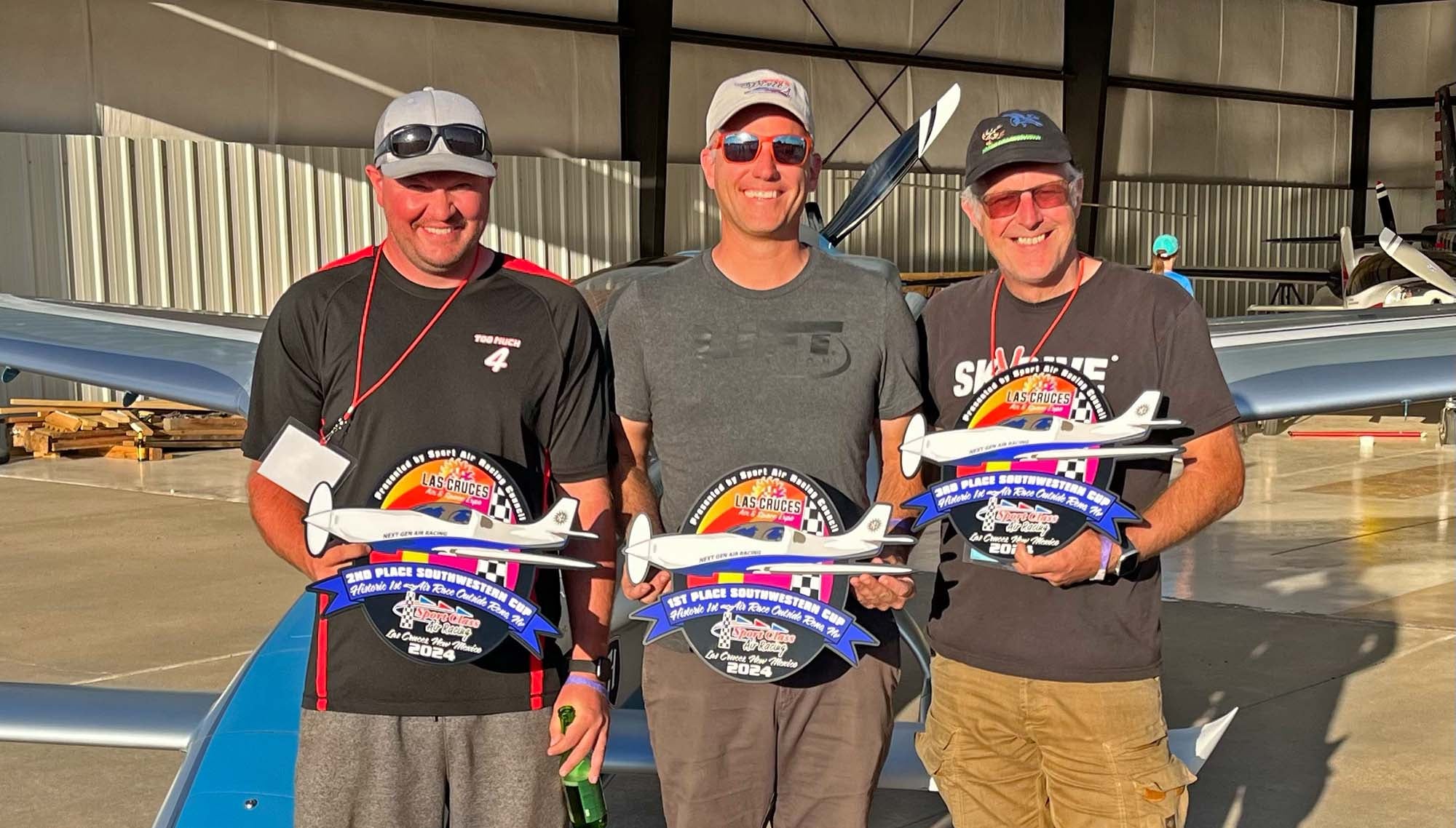
With so much new at Las Cruces last weekend (October 19-20, 2024), there are details behind the racing worth noting. Firstly, the races were the first unrestricted pylon races of the post-Reno era. That the Sport Class has organized itself into an FAA-recognized entity capable of obtaining insurance and putting on all-out speed contests is a noteworthy accomplishment before the first propeller turned.
While the Las Cruces event is still young, it is established and with significant political will behind it. New Mexico is serious about promoting aerial events and the organized Sport Class fits with their goals. Expect more races at this high desert venue.
Naturally there are highlights and things to improve with these new races. In no particular order here are a few takeaways from the Las Cruces weekend.
Chuck Coleman
Everyone was devastated by the loss of Chuck Coleman during his aerobatic routine on Sunday. His great experience makes his apparent loss of control accident that more baffling and underscores the seriousness of low level flight.
Close Racing
The Sport Class put up eight race planes for every heat and many of them were clustered in the mid- to high-200 mph range, resulting in some close finishes. Entries were limited to experienced racers at this first unrestricted race and there was a minimum of mechanical carnage (Even Kevin Eldredge only DNF’d once…).
Pylons
To have a pylon race you need pylons, but what a pylon should look like and how to build them is a surprisingly open question. At Reno the “drum on a stick” pylons were established long ago and fully amortized as a cost. At Las Cruces the Sport Class has experimented with variations of lights on poles, starting with industrial light units; those small trailers with a telescoping pole and lights used in construction areas. These proved workable for slower aircraft, but starting in the mid-200 mph range such small targets ask much of the pilots, and adding another 100 mph to that means coming up with a new idea. For the October races that was bucket trucks lifted well above the ground, again with blazing white work lights. The fast guys said they were okay, but a visually more massive solution may still be needed.
Another “pylon” consideration at Las Cruces is the three race courses are laid out over essentially virgin, nearly featureless desert, while at Reno decades of racing meant all sorts of access roads had been cut. Also, the airport area north of the Reno-Stead runways had various National Guard and police training areas, so the racers had all sorts of visual cues to help locate the pylons. And let’s not forget many of the racers had years of experience at Reno, so familiarity was a help to many. Not so at Las Cruces where the ground is still pretty new to everyone. All said, the consensus is the Las Cruces pylon situation is about 80 percent of the way to a permanent solution.
This animation of the outer eight mile and inner five mile Las Cruces courses illustrates how tough it can be to spot pylons in a featureless desert. This video is from Brian Murray who has been collecting gps flight data and is working to deliver accurate post-race animations to greatly aid pilot training and aircraft development.
Official Speeds
Las Cruces elevation and climate is similar to Reno, so the power output and engine tuning along with the aerodynamic performance of the airframes is similar. However, everyone says the official speeds at Las Cruces are notably slower than those at Reno. The difference comes from how speeds are calculated. There are two ways of doing this, Point-To-Point, meaning the surveyed, straight distance from one pylon to another, or Optimal Race Path. ORP is the distance derived from drawing a curved path around the pylons and is obviously a longer, more realistic path to the actual distance flown by the planes. Reno has used both methods over the years, settling on ORP in later years.
The Sport Class would like to use ORP as it gives a more accurate, faster official speed, but the international body establishing aviation records only accepts Point-To-Point calculations. Wanting their racers to be able to set international records, the PTP has been used at Las Cruces resulting in lower speeds than we’re used to.
The situation is especially wobbly on the long 8-mile course as the big turn at the west end could really use another pylon just to bring the calculated distance closer to reality. As it is, the racers figure the Las Cruces speeds are somewhere between five to seven percent slower than what ORP would yield. This should be kept in mind when comparing something like Findlay’s 338 mph speed at Las Cruces to the 410 mph or so he’s posted at Reno. Sure, he’s running less boost at Las Cruces as so far he can easily win without going any faster (where is Jeff LaVelle when you need him?), but that 337 mph is 362 mph if you give it a seven percent bump. Still smoking fast in anyone’s book.
No Nitrous
To ease logistics all the nitrous-assisted racers at Las Cruces elected not to run the giggle gas. Thus, they didn’t need to haul all those large, high pressure gas cylinders—a relief to everybody. This did tighten up the results some, but we don’t expect this gentlemen’s agreement to last forever.
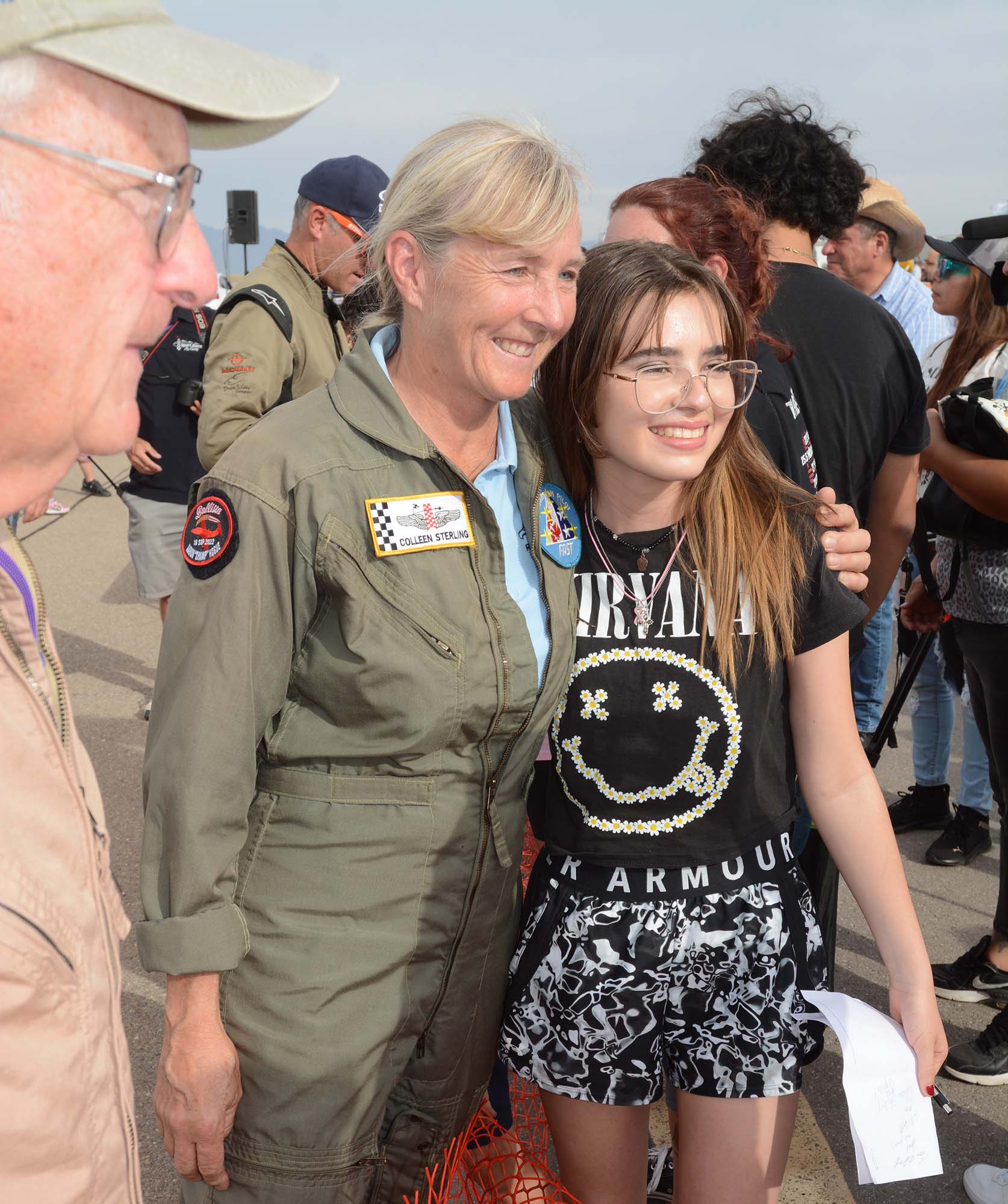
Continued Interest
Anyone thinking air racing is dead hasn’t told the racers. Multiple Sport Class racers expended significant time, money and effort between the AirVenture Cup last July (which was enthusiastically attended by Sport Class regulars) and the Las Cruces event. Furthermore, several weeks prior to Las Cruces we visited a shop where a new, very fast Biplane race plane is under construction and there are efforts afoot in Formula One as well. Air racing may look a little different and run in front of smaller crowds in more locations around North America than we grew up with, but there is no lack of interest by the participants.
Tom McNerney
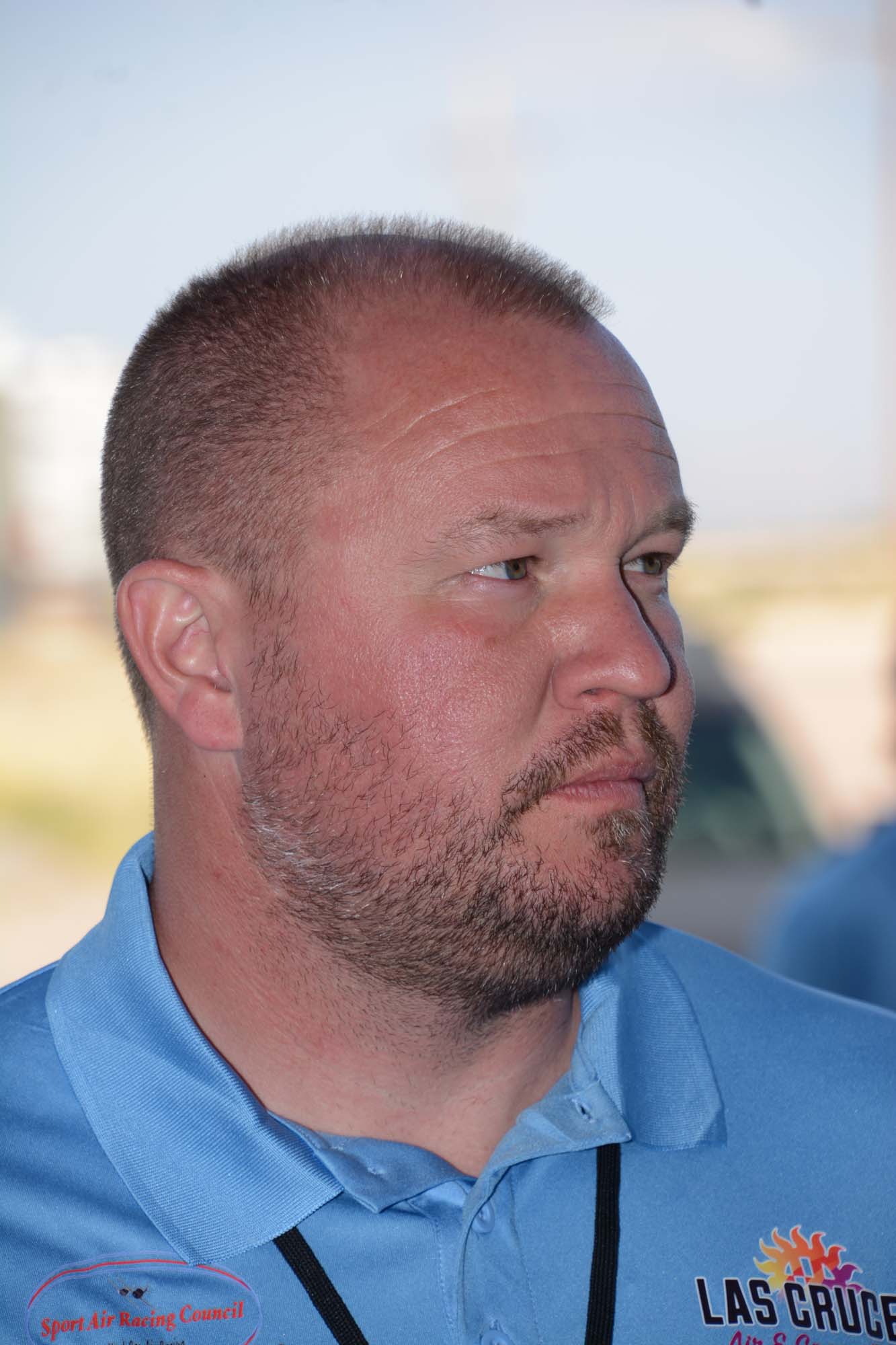
On the individual level, Las Cruces offered a host of notable stories, as racing is wont to do. It was the capstone to an amazing 2024 for professional plane builder Tom McNerney. He debuted his Lancair Super Legacy at Reno in 2023 where if you were watching closely he demonstrated the race-winning potential of his beautifully built Sport Gold racer. Tom then went on to dominate the AirVenture Cup cross country race, winning overall, followed by a Gold Lindy at AirVenture with the same plane and then top qualifier overall at Las Cruces. He was also pivotal in returning Super Legacy Race 44 to racing status for Pete Balmer for Las Cruces, plus race #77 and is a huge help to everyone in the pits no matter he’s already been up all night working. And leading up to Las Cruces he was absolutely busting hours working on airplanes, so good for him doing so well.
Actually, Tom could go faster if only he had a fat bank account behind him. That’s a must for the inevitable engine rebuild when turning the wick up all the way on a highly boosted Sport Gold engine. This is such a factor that at Las Cruces Tom showed up with heavy springs in his turbo wastegates, the ones required to make eye-watering manifold pressure. He used more manifold pressure than ever for one lap to qualify first, but then fitted weaker wastegate springs after qualifying just so he couldn’t run that hard again in the heat of battle! Car racers call it the Red Mist… As it was his computer program was running the wrong tune at his race’s start and Tom thought, “Hmm, this thing is kinda slow.” Looking down to find he had only 42 inches of manifold pressure he quickly toggled up his normal race tune for 50 inches and let her run where she would. It was enough to make the slow starting Andy Findlay pedal a little harder to get by, so it was at least a good looking race. But this anecdote speaks volumes on the reality of caring for one of these tempting hand grenades race engines.
James Webb
One of those stepping up his program for Las Cruces was James Webb, and if there was a most improved award (the Rocketeer Award as it’s known elsewhere) he would have taken it home at Las Cruces. Webb managed to install and tune a Vortech supercharger onto his Legacy in time for Las Cruces, qualifying at 293 mph. That’s easily 300 mph among friends and placing Webb solidly in the Gold ranks.
Joe Coraggio
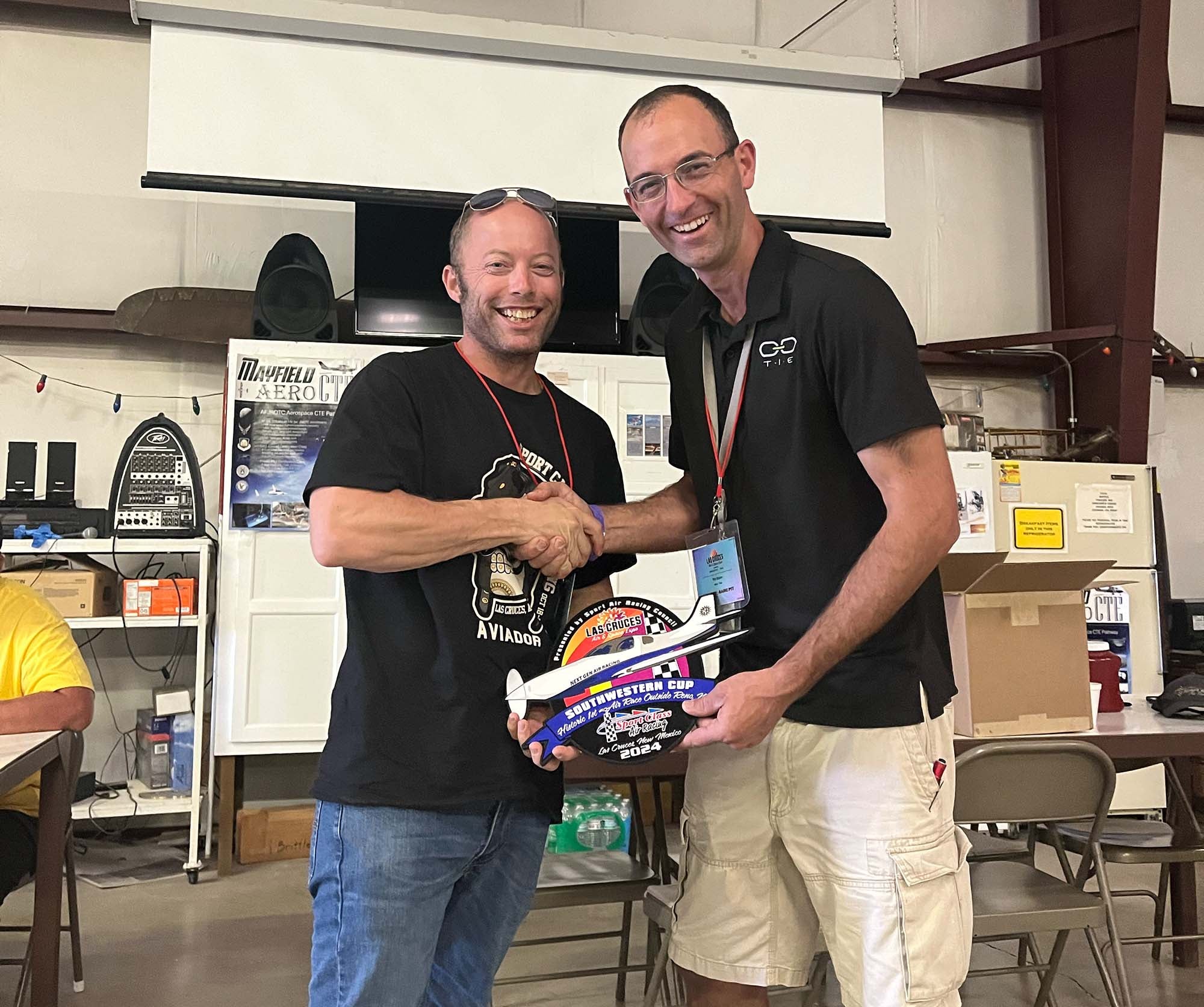
Between AirVenture Cup last July and Las Cruces in October Joe Coraggio installed high compression pistons, fitted ported and cryo-treated cylinders from Ly-Con, designed, built, installed and partially tuned a custom, Dave Anders-inspired induction system on his 550 Continental, plus reflexed the flaps on his Lancair Legacy. Dedicated to going as fast as possible naturally-aspirated, Joe had the fastest such plane at Las Cruces and is the current Sport Silver leader. On top of that, Joe lent his LongEZ to Sean Van Hatten who was otherwise plane-less for Las Cruces.
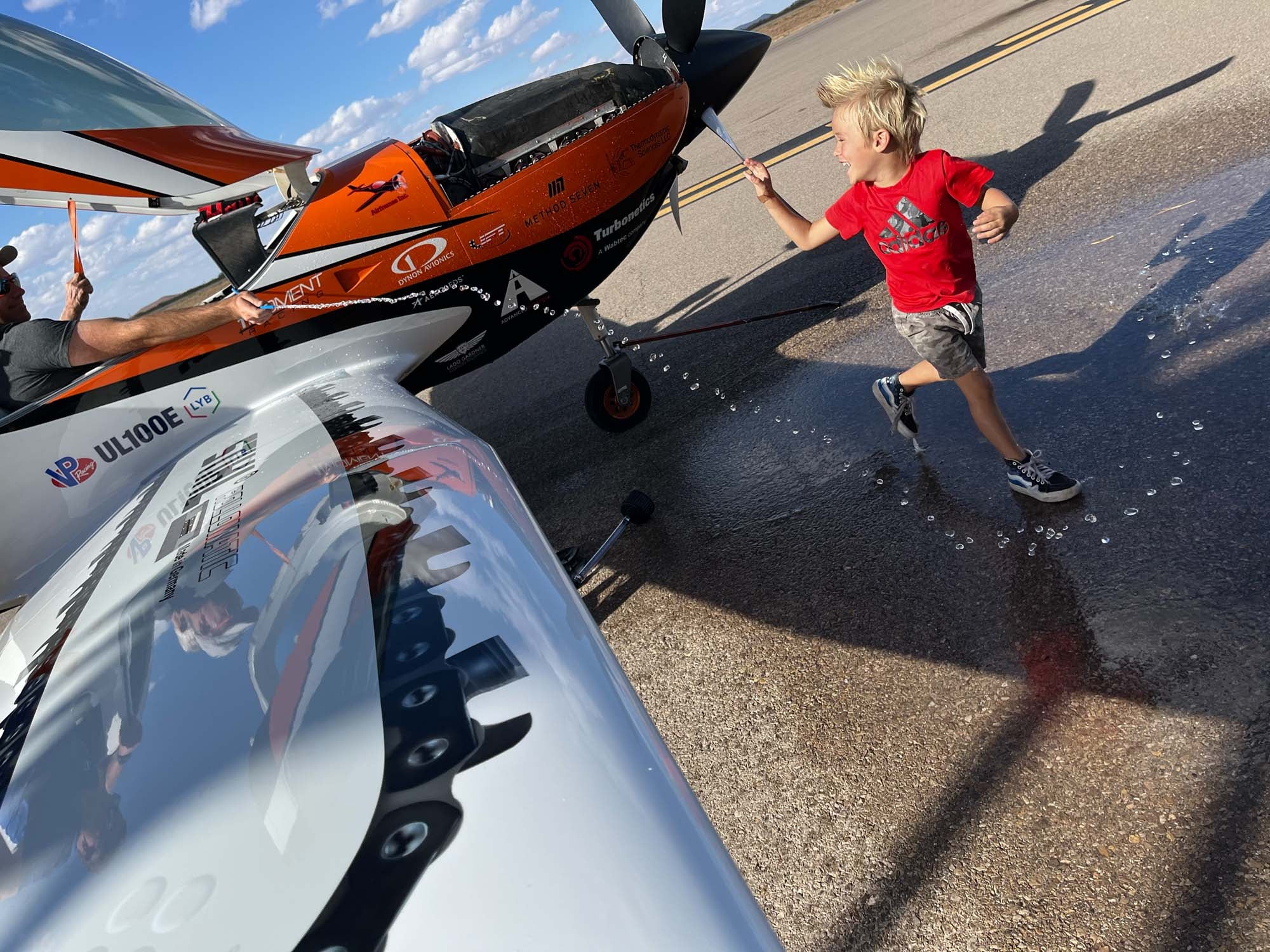
Andrew Findlay
With the most highly tuned Gold racer running today we expected Andy to run fast and he did (enough to win), but he also had more mechanical drama than most. That goes with the “highly tuned” part, of course. “The plane had some injector issues during qualifying that we got sorted out and the first race went well. I was able to hang with Tom [McNerney] for a few laps and then added some power to push past him. I really like the course layout with all the open areas and ability to pick different apex points around [pylons] 5 and 6 when trying to pass.” Andy went on to thank EAA Chapter 555, Southwest Aviation, Francis Aviation, the Las Cruces airport and city leadership saying they, “were fabulous hosts.”
That was a widely held sentiment among the racers, as is Andy’s opinion that, “the venue is well suited for racing. After finish training a few racers, we had some amazing formation flights and the New Mexico sky didn’t disappoint. It was one of those perfect flights, with amazing airplanes and even better people. It’s always so special to fly with this group of people.”
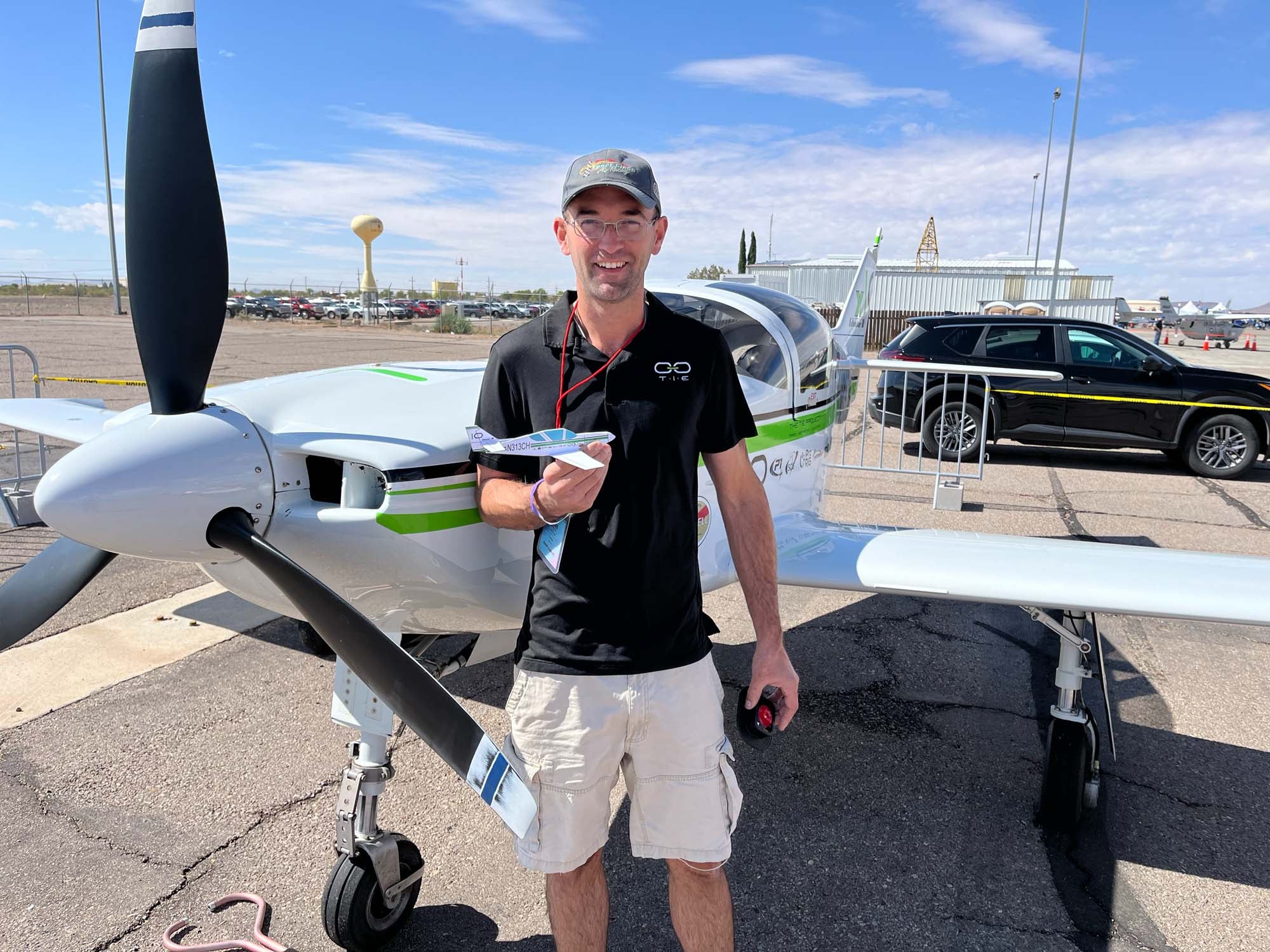
Tim Slater
Since we rode with Tim in the AirVenture Cup he’s installed swooped cowling exits and spent a ton of time upgrading the landing gear on his Glasair III both for reliability and robustness, but also to tighten their closing for less drag. Luckily for the spectators his also naturally-aspirated competitor Joe Coraggio had also been working on his Lancair, so the two continued their friendly, motivating and tight rivalry around the Las Cruces pylons. A cut pylon gave the razor thin Silver win to Slater.
As president of the Sport Class Tim is often distracted by management duties, but he was ecstatic over the Las Cruces weekend as it showed the professionalism and energy in the group. He also had a ton of fun, saying it was, “the most fun flying I’ve ever had.” Tim joined the chorus saying the official speeds are well off reality. His official speed was in the mid-270’s while his onboard GPS averages were more like 290 mph, he reports.
Kevin Eldredge
Kevin is great as he’s always hair on fire and trying all sorts of combinations. He’s raced a wide range of Sport planes, most famously the Nemesis NXT Relentless, but these days he’s pedaling the ex-Jim Rust Glasair III. He posted the only DNF of the weekend, and that for a curious vibration he preferred to land and sort out rather than push his luck.
Fun But Tiring
“Great!” and “Fantastic!” were the two most common descriptions race pilots gave when asked how their week went. But they were also ready for a break by Sunday thanks to a schedule that had them logging hours like migrating sea birds. First off everyone had to fly to Las Cruces, then it was formation refresher clinics early, practice in the local area, qualifying on the course, demonstration flights over the city of Las Cruces, test hops, demo flights over the welcome dinner, heat races and ultimately the finals meant everyone was probably flying in their dreams each night. “It was a lot of flying in a condensed time,” was one description. And then they all got to fly home.
That Livestream
If you tuned in to the Livestream feed from the Las Cruces race you were no doubt underwhelmed by the glitchy transmission. We were, too, but given the small bandwidth around the somewhat remote airport it was no surprise the quality was from the biplane era of electronics. They’re working on it. That and the original feed is in 4K and will available on YouTube soon. Thanks to Brain Murray for the great effort providing the Livestream.
Past Fledgling
A meaningful highlight was the Sport Class has clearly graduated from a new group exploring their capabilities to a well regulated organization capable of putting on an air race. Certainly there are many edges to sand a little smoother, but the doubt is gone. From here it’s making the business connections to grow the sport.
Las Cruces
Do the racers enjoy Las Cruces as a place to race? Yes. Everything from the food to the course layouts are given thumbs up. And without the tensions of a big, multi-class race the summation was, “…it’s all the fun, so relaxing, and without the drama.”
What’s Next?
More pylon air racing is definitely in the works but at our deadline the only official announcement is the Reno Air Racing Association’s big National Championship Air Races with all seven race classes scheduled for Roswell, New Mexico, September 10-14, 2025. There will be training events before that, but they are closed to the public and aren’t speed contests in any case. We’ve heard rumblings of other races in the works, but these fall somewhere between probabilities and vicious rumors so we’ll stick to reporting the news when all the contracts have been signed. That said, we expect Las Cruces will be on the Sport Class calendar next October.













